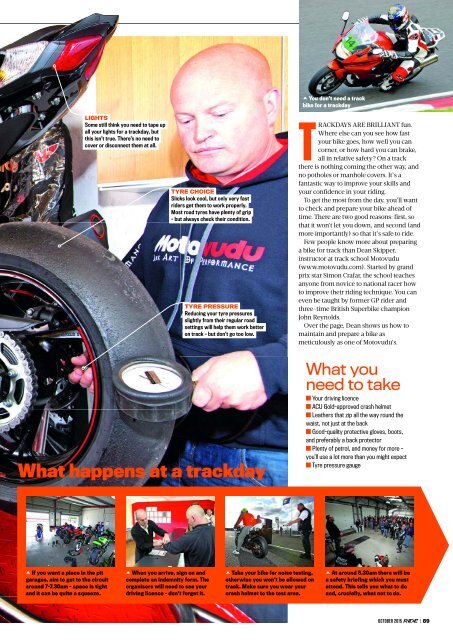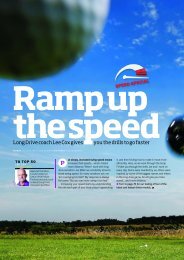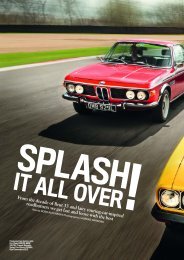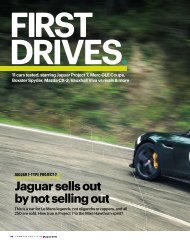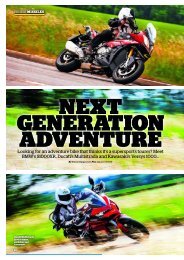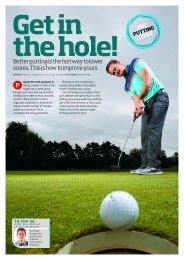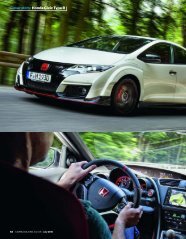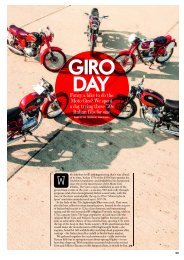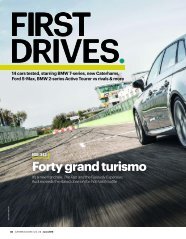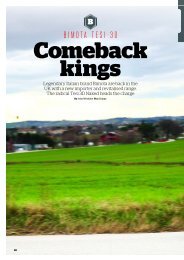Motorbikes.pdf
Create successful ePaper yourself
Turn your PDF publications into a flip-book with our unique Google optimized e-Paper software.
You don’t need a track<br />
bike for a trackday<br />
LIGHTS<br />
Some still think you need to tape up<br />
all your lights for a trackday, but<br />
this isn’t true. There’s no need to<br />
cover or disconnect them at all.<br />
TYRE CHOICE<br />
Slicks look cool, but only very fast<br />
riders get them to work properly.<br />
Most road tyres have plenty of grip<br />
– but always check their condition.<br />
TYRE PRESSURE<br />
Reducing your tyre pressures<br />
slightly from their regular road<br />
settings will help them work better<br />
on track – but don’t go too low.<br />
TRACKDAYS ARE BRILLIANT fun.<br />
Where else can you see how fast<br />
your bike goes, how well you can<br />
corner, or how hard you can brake,<br />
all in relative safety? On a track<br />
there is nothing coming the other way, and<br />
no potholes or manhole covers. It’s a<br />
fantastic way to improve your skills and<br />
your confidence in your riding.<br />
To get the most from the day, you’ll want<br />
to check and prepare your bike ahead of<br />
time. There are two good reasons: first, so<br />
that it won’t let you down, and second (and<br />
more importantly) so that it’s safe to ride.<br />
Few people know more about preparing<br />
a bike for track than Dean Skipper,<br />
instructor at track school Motovudu<br />
(www.motovudu.com). Started by grand<br />
prix star Simon Crafar, the school teaches<br />
anyone from novice to national racer how<br />
to improve their riding technique. You can<br />
even be taught by former GP rider and<br />
three-time British Superbike champion<br />
John Reynolds.<br />
Over the page, Dean shows us how to<br />
maintain and prepare a bike as<br />
meticulously as one of Motovudu’s.<br />
What happens at a trackday<br />
What you<br />
need to take<br />
Your driving licence<br />
ACU Gold-approved crash helmet<br />
Leathers that zip all the way round the<br />
waist, not just at the back<br />
Good-quality protective gloves, boots,<br />
and preferably a back protector<br />
Plenty of petrol, and money for more –<br />
you’ll use a lot more than you might expect<br />
Tyre pressure gauge<br />
If you want a place in the pit<br />
garages, aim to get to the circuit<br />
around 7-7.30am – space is tight<br />
and it can be quite a squeeze.<br />
When you arrive, sign on and<br />
complete an indemnity form. The<br />
organisers will need to see your<br />
driving licence – don’t forget it.<br />
Take your bike for noise testing,<br />
otherwise you won’t be allowed on<br />
track. Make sure you wear your<br />
crash helmet to the test area.<br />
At around 8.30am there will be<br />
a safety briefing which you must<br />
attend. This tells you what to do<br />
and, crucially, what not to do.<br />
OCTOBER 2015 | 89


